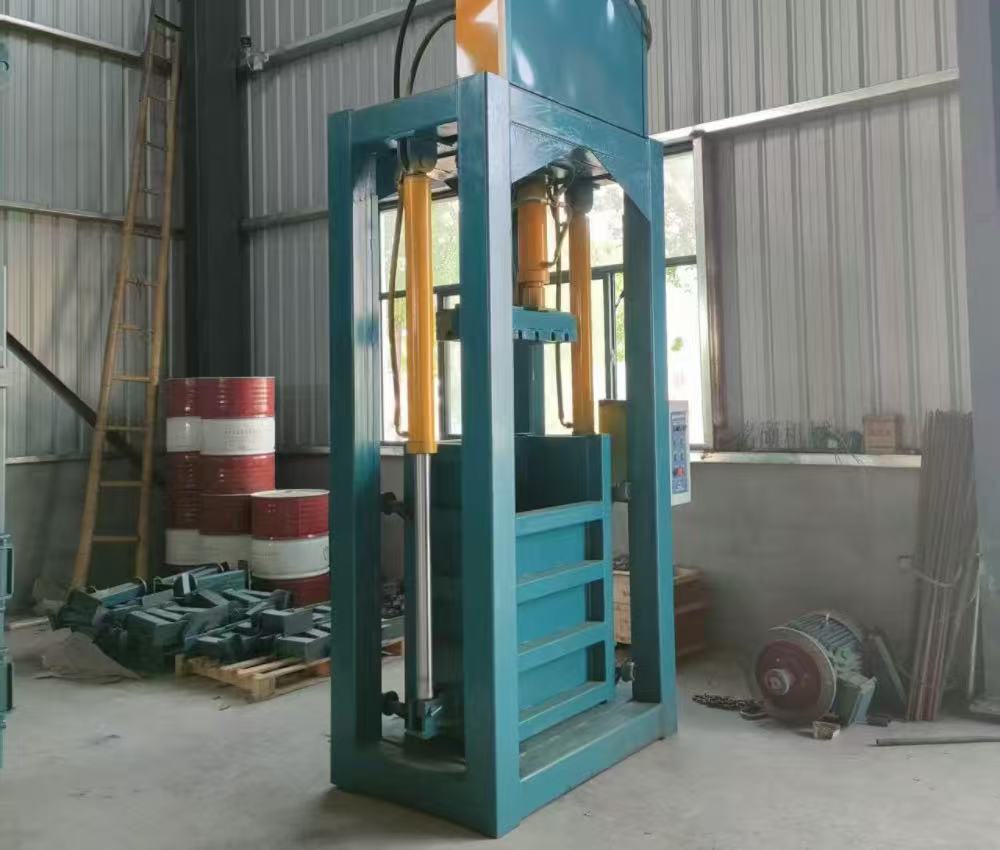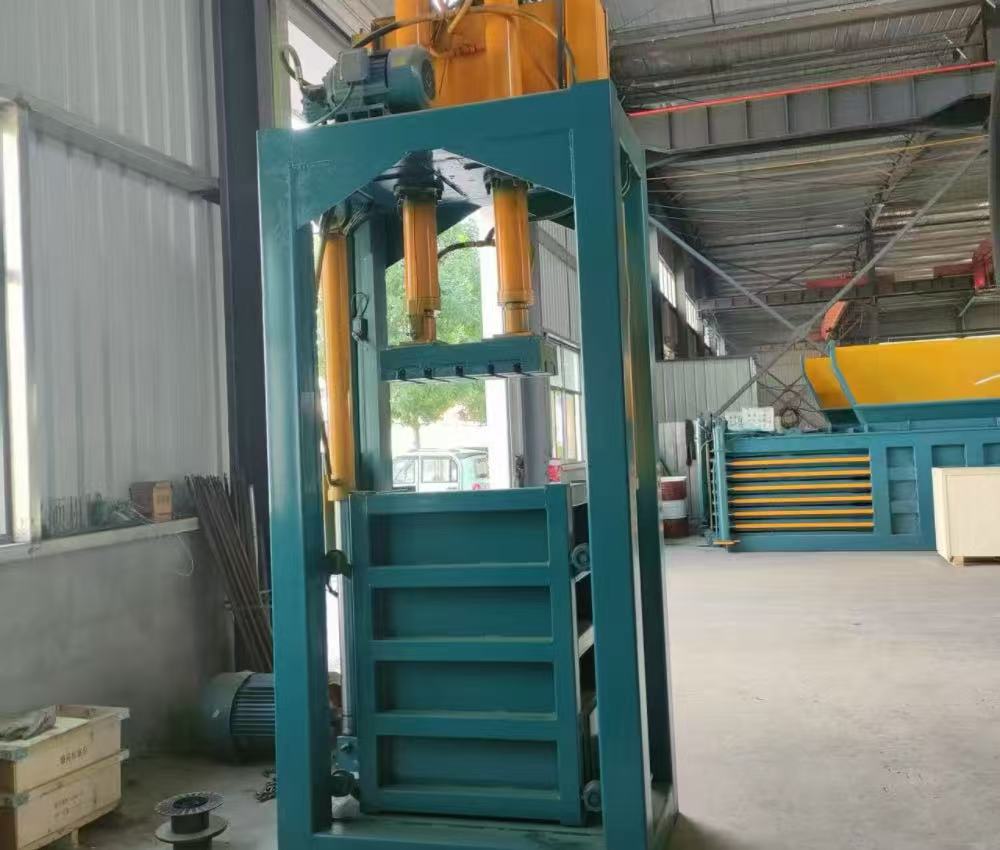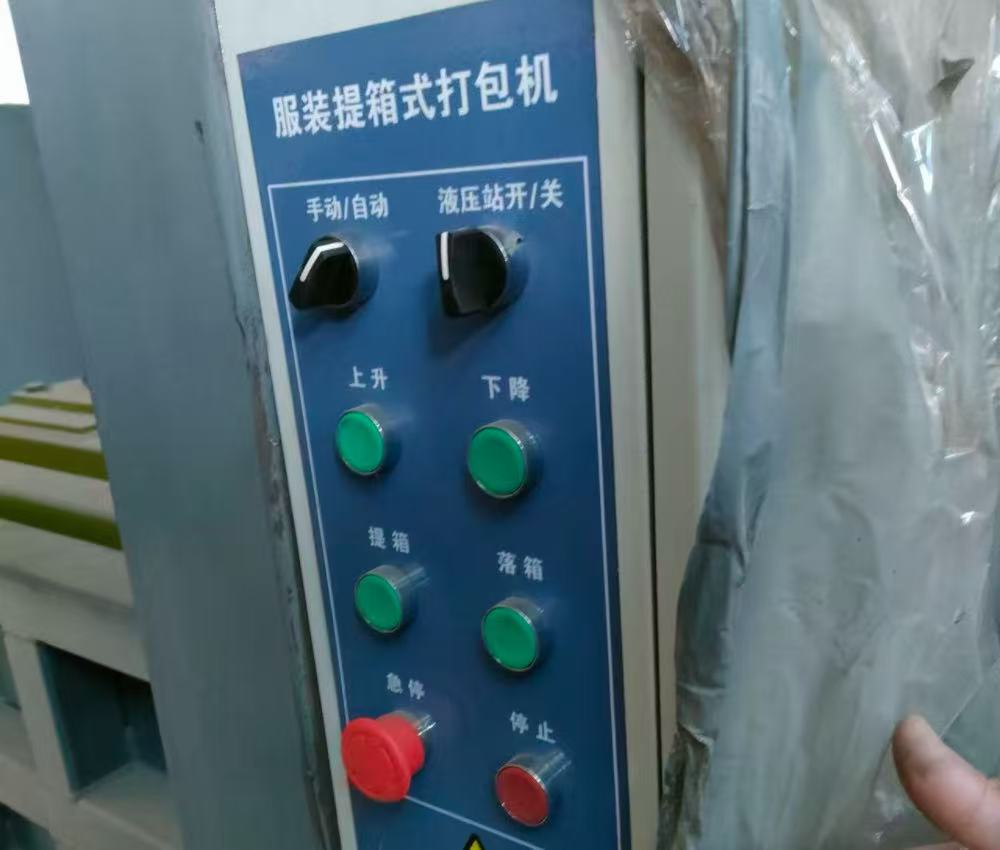What Is A Vertical Clothes Baler?

A vertical clothes baler is a piece of recycling equipment designed to compress and bundle clothing, textiles, and fabric waste into compact bales. Unlike horizontal balers that require more space and are often used in large-scale operations, vertical balers are designed for medium to smaller-scale facilities. They are commonly found in second-hand clothing warehouses, textile recycling plants, thrift stores, garment factories, and logistics centers.
This machine operates with a vertical hydraulic press that exerts high pressure on clothing materials placed in the compression chamber. Once the material is compressed into a dense block, the bale is tied with straps or wires, making it easier to handle, store, and transport.
By turning loose clothing into uniform bales, vertical clothes balers significantly reduce storage space requirements and cut down transportation costs.
Why Use A Vertical Clothes Baler?

Space Optimization
Loose clothes and fabrics occupy a large volume of space. A vertical clothes baler compresses them into smaller, denser bales, saving warehouse space and making the storage process more efficient.
Cost Reduction
Transportation costs are often calculated by volume. By reducing the size of clothing waste, companies can transport more material in fewer trips, lowering shipping expenses.
Environmental Responsibility
The fashion and textile industries generate massive amounts of waste every year. A vertical baler helps organizations recycle old clothes and repurpose fabrics, contributing to sustainable waste management and supporting a circular economy.
Operational Efficiency
Without a baler, staff must spend more time organizing and moving loose clothes. With a baler, the handling process becomes more streamlined and efficient, freeing up labor for other tasks.
Versatility
A vertical clothes baler can handle not only second-hand clothing but also shoes, textiles, blankets, rags, towels, and even some soft packaging materials.
How Does A Vertical Clothes Baler Work?

The operation of a vertical clothes baler can be broken down into a few simple steps:
-
Loading
Open the door of the baler and load the chamber with loose clothing or textiles. Depending on the machine size, the chamber can take several kilograms to hundreds of kilograms per load. -
Compression
Close the door securely, then start the hydraulic system. The vertical cylinder applies strong pressure to compress the materials into a dense block. -
Strapping
After the compression cycle is finished, strapping wires or plastic bands are passed through the designated slots to secure the bale, keeping the material tightly bound after removal. -
Ejection
Many vertical clothes balers include an ejector system or hydraulic push mechanism. This allows the finished bale to be safely and easily removed from the chamber. -
Storage And Transport
The compact bales can be stacked on pallets or loaded into containers for efficient storage and shipment.
Key Features Of Vertical Clothes Balers
-
Hydraulic Power: Strong cylinders apply high pressure to compress large volumes of clothing into tight bales.
-
Compact Design: Requires less floor space compared to horizontal balers.
-
Easy Operation: The user-friendly control panel makes the machine simple to operate, even for new staff.
-
Durable Build: Heavy-duty steel structure designed for long-term use in industrial environments.
-
Safety Systems: Equipped with interlocks and emergency stop functions to ensure operator safety.
-
Flexible Bale Sizes: Machines can produce bales of different sizes and weights to match user requirements.
Applications Of Vertical Clothes Balers
Second-Hand Clothing Export
Used clothing exporters rely on vertical clothes balers to package garments into uniform bales, making them easier to load into shipping containers for overseas export.
Textile Recycling
Recycling facilities use balers to handle unwanted textiles, fabric offcuts, and old clothes. These bales are then processed into new fibers or repurposed materials.
Thrift Stores And Charities
Charity organizations and thrift shops collect massive amounts of clothing donations. A baler helps manage this flow efficiently, preparing clothes for either resale or recycling.
Garment Manufacturing
Factories generate fabric scraps and defective clothes during production. Vertical balers help compress these materials for easier disposal or recycling.
Logistics And Warehousing
Companies handling textile returns or surplus inventories can reduce storage costs and improve warehouse organization by baling excess items.
How To Use A Vertical Clothes Baler Safely
Step 1: Training
Operators should receive proper training before using the machine. Understanding how to load, compress, strap, and eject bales safely is crucial.
Step 2: Personal Protective Equipment (PPE)
Workers should wear gloves and safety shoes to protect themselves while handling textiles and strapping wires.
Step 3: Loading Precautions
Do not overload the chamber. Always follow the manufacturer’s recommended loading capacity.
Step 4: Monitoring The Compression Cycle
Never attempt to open the door or reach into the chamber during operation.
Step 5: Strapping And Ejecting
Ensure bales are tied securely before ejection. Use the ejector system carefully to avoid accidents.
Advantages Of Vertical Clothes Balers Over Other Machines
-
Smaller Footprint: Ideal for companies with limited warehouse space.
-
Lower Cost: More affordable than horizontal balers, making them suitable for medium and small businesses.
-
Flexibility: Can handle a wide range of textiles and clothing materials.
-
Low Maintenance Requirements: A simple structure and user-friendly design help reduce maintenance needs.
Choosing The Right Vertical Clothes Baler
When selecting a baler, consider the following factors:
-
Bale Size And Weight Requirements
Decide whether you need small, medium, or large bales depending on storage and transportation needs. -
Material Type
Some balers are optimized for clothes only, while others can also handle shoes and bulkier fabrics. -
Operation Frequency
If your business processes clothing continuously, choose a heavy-duty baler with a higher cycle capacity. -
Power Options
Check whether the machine requires three-phase electricity or if single-phase models are available for smaller facilities. -
After-Sales Support
Choose a supplier who provides training, spare parts, and reliable technical support.
Conclusion
A vertical clothes baler is an essential machine for businesses dealing with textiles, garments, and clothing waste. It reduces space requirements, cuts down transportation costs, and supports sustainable recycling practices. From thrift stores to large textile recyclers, vertical balers offer an efficient and cost-effective solution to handling large volumes of clothing. By understanding how the machine works, why it is beneficial, and how to use it properly, companies can improve operational efficiency and make a positive environmental impact.
